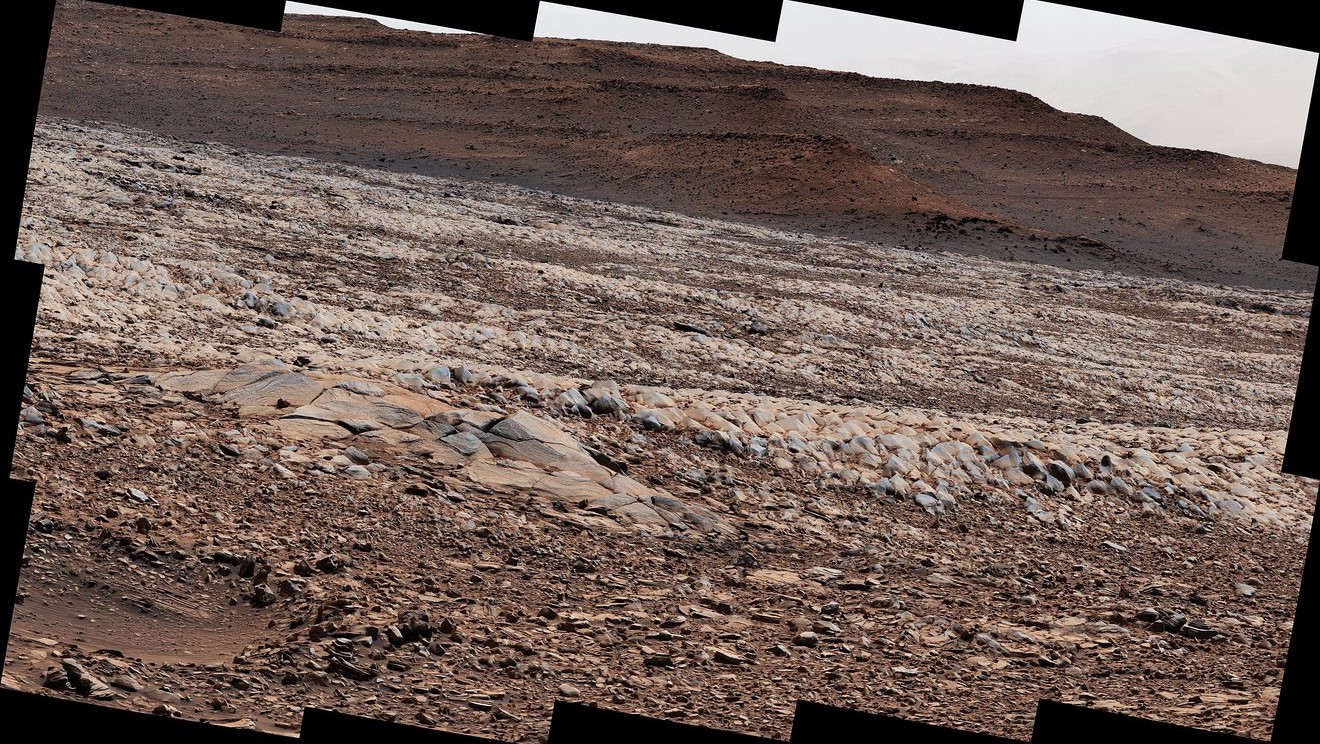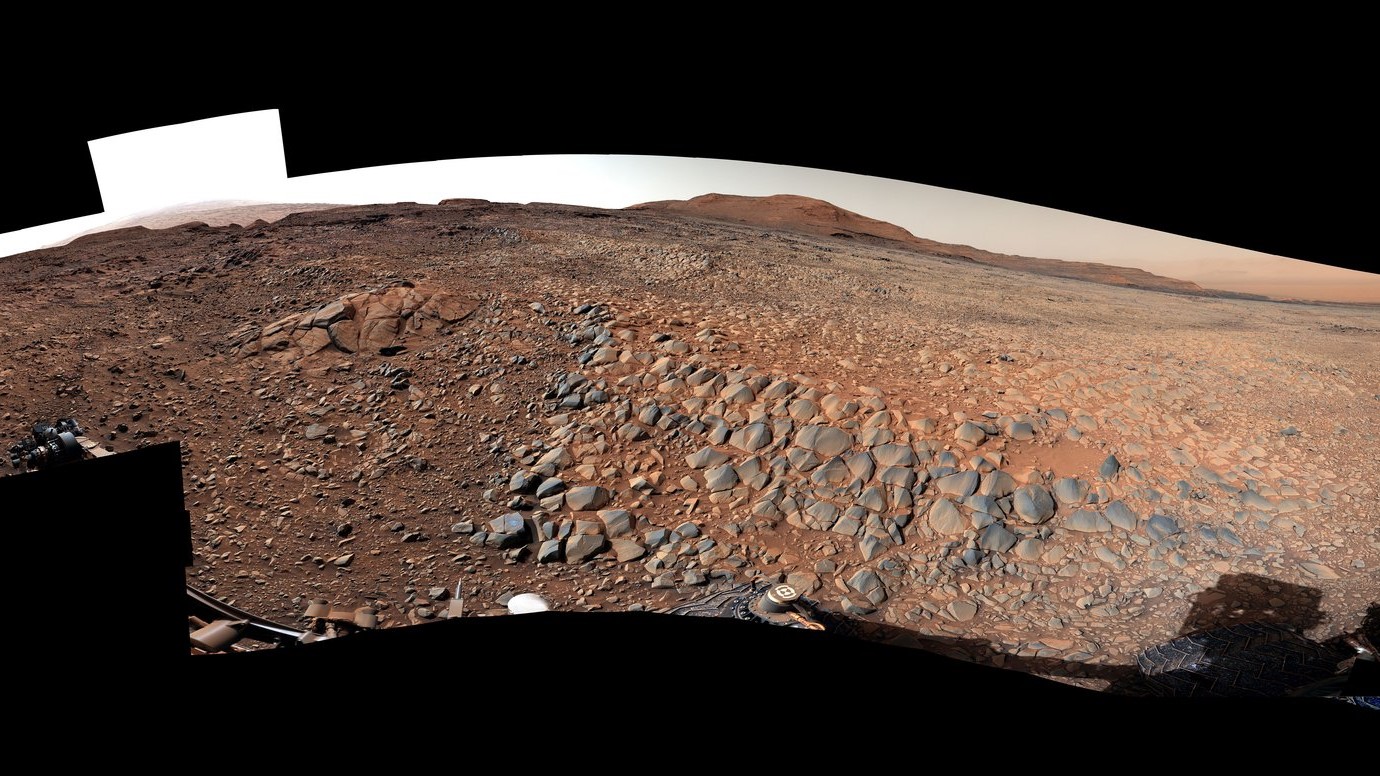NASA's Curiosity Mars rover turns to avoid dangerous 'gator-back' rocks (photos)
One of NASA's intrepid Mars rovers unexpectedly changed its course to avoid hazardous "gator-back" terrain.
The Curiosity rover, which is exploring Mount Sharp, was climbing the southern side of a gentle slope called "Greenheugh Pediment" for most of March, where it encountered mostly rubbly sandstone. On March 18, the rover's team on Earth spotted unexpected terrain littered with wind-sharpened rocks, called ventifacts. In response, the drivers decided to turn the robotic explorer around, according to a statement from NASA's Jet Propulsion Laboratory (JPL) in California, which leads the mission.
Earlier in its mission on Mars, Curiosity had encountered similar ventifacts that damaged the rover's wheels. However, the rover's recent rocky photos showed more ventifacts than the team has seen in Curiosity's nearly 10 years on the Red Planet, according to the statement.
Related: Rugged Mars has taken big bites out of the Curiosity rover's wheels (photos)
Ventifacts are composed of sandstone, which is the hardest type of rock Curiosity has encountered on Mars since landing in Gale Crater on Aug. 6, 2012. Given the features' scale-like appearance, scientists have nicknamed ventifacts "gator-back" terrain.
Since the rover first encountered this type of hazardous terrain, the mission's team has worked to reduce wheel wear and relied on orbital imagery to chart safer routes for the rover to prevent it from driving over dangerous terrain. However, as Curiosity approached the southern side of Greenheugh Pediment — a 1.2 mile-wide (2 kilometer-wide) sloping plain near the base of Mount Sharp — it saw the rocky terrain up-close, revealing to mission engineers just how hazardous the ventifacts are.
"It was obvious from Curiosity's photos that this would not be good for our wheels," Megan Lin, Curiosity project manager from JPL, said in the statement. "It would be slow going, and we wouldn't have been able to implement rover-driving best practices."
Breaking space news, the latest updates on rocket launches, skywatching events and more!
While the gator-back rocks wouldn't have been impassable, traversing the terrain would have increased wear and tear on the wheels, and threatened their longevity. Therefore, the team is charting a new course up Mount Sharp, the 3.4-mile-tall (5.5-kilometer-tall) mountain that Curiosity has been ascending since 2014.
Scientists had originally pointed the rover toward Greenheugh Pediment to better understand how the standalone feature formed. This area is also near Gediz Vallis Ridge, which planetary scientists believe was created by debris flowing down the mountain. Therefore, exploring the tricky rocks might have revealed new clues about material that originated at the mountain's uppermost reaches.
"From a distance, we can see car-sized boulders that were transported down from higher levels of Mount Sharp — maybe by water relatively late in Mars' wet era," Ashwin Vasavada, Curiosity's project scientist at JPL, said in the statement. "We don't really know what they are, so we wanted to see them up close."
Instead, Curiosity will now climb down from the pediment, back to a safer area it has previously explored — a transition zone between clay-rich terrain and one with higher amounts of salt minerals called sulfates. This area helps scientists better understand Mars' ancient past, since the clay minerals would have formed when the mountain was wetter, whereas the salts would have formed as the planet's climate dried out over time, according to the statement.
"It was really cool to see rocks that preserved a time when lakes were drying up and being replaced by streams and dry sand dunes," Abigail Fraeman, Curiosity's deputy project scientist at JPL, said in the statement. "I'm really curious to see what we find as we continue to climb on this alternate route."
Follow Samantha Mathewson @Sam_Ashley13. Follow us on Twitter @Spacedotcom and on Facebook.

Samantha Mathewson joined Space.com as an intern in the summer of 2016. She received a B.A. in Journalism and Environmental Science at the University of New Haven, in Connecticut. Previously, her work has been published in Nature World News. When not writing or reading about science, Samantha enjoys traveling to new places and taking photos! You can follow her on Twitter @Sam_Ashley13.


